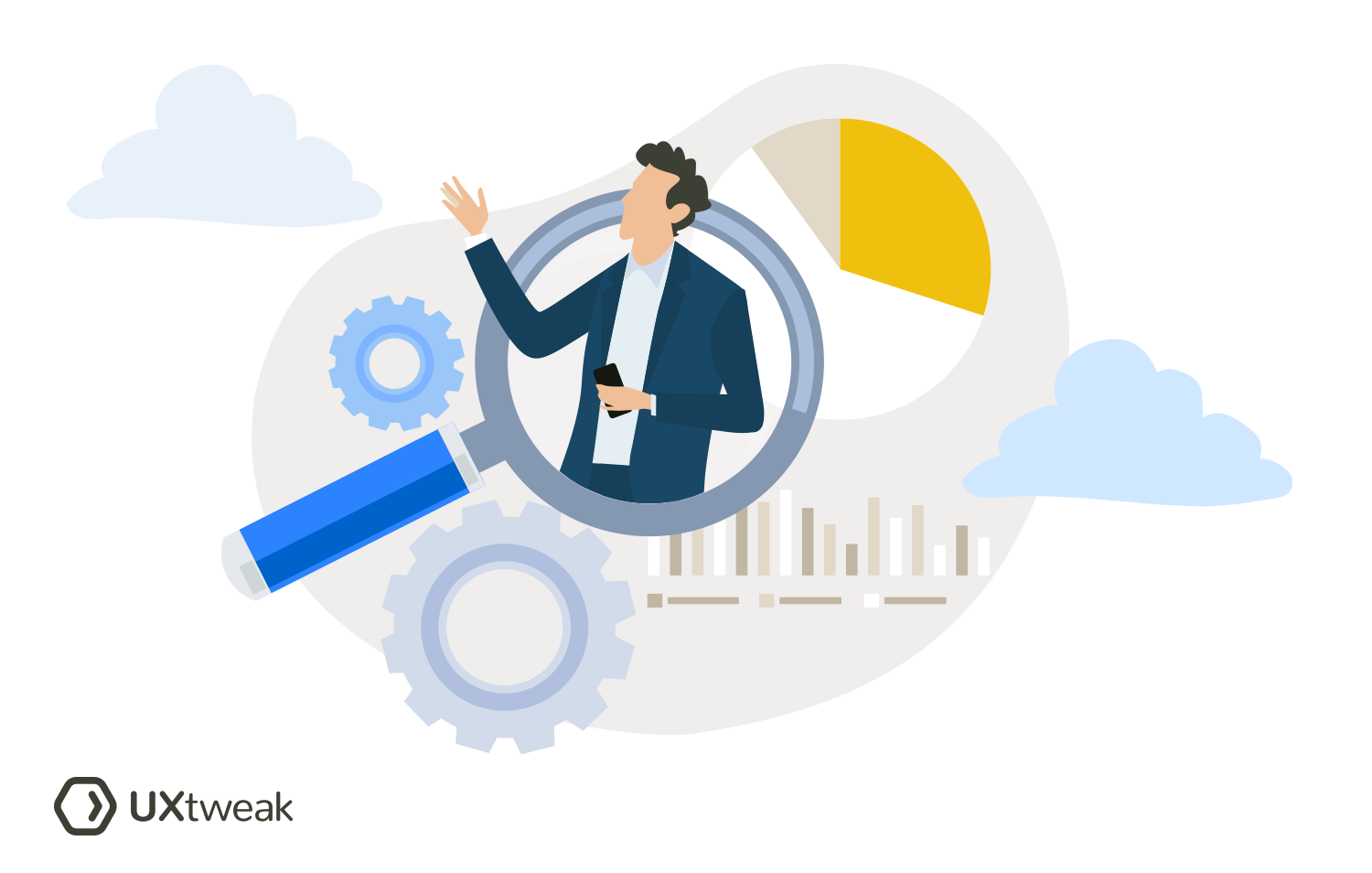What if we told you there’s a way to predict how well your product will do on the market before actually launching it? Sounds great, right? Good news is, product discovery makes it possible for everyone!
Let’s take a look at what product discovery is and how it can help you assure the success of your future product!
In this guide, we will take you through the process of product discovery, explain its significance in building successful products, and equip you with the knowledge and techniques to implement it effectively.
Key Takeaways:
✅ Product discovery is the process of gathering information about your future customers’, as well as generating and testing product ideas that will solve their problems and satisfy their needs
⚡ Product discovery is essential for building successful products
🔥 The product discovery process involves 5 main stages: user research, problem statement, idea generation, prototyping, testing and refining your ideas
🌟 Product discovery helps to introduce customer centric approach, reduce risks, increase innovation and ensure better product-market fit
🐝 You can conduct product discovery with UXtweak for free!
What is product discovery?

Product discovery is the process of gathering information about your future customers’, uncovering their needs and pain points, and generating ideas for the new product or feature based on this information. Product discovery helps to come up with and validate ideas, as well as try out different concepts and understand what exactly your future customers need the product to be.
The primary goal of product discovery is to determine the desirability and viability of your product in order to not end up creating something that your users don’t need.
The process of product discovery usually includes generating ideas, getting to know the users, coming up with hypotheses and testing your assumptions.
Why is product discovery an essential part of the product development process?
To better understand the importance of product discovery in the digital product development process, let’s imagine your team just came up with a new idea for a mobile app. Your product manager Sarah is excited to dive into the development of this innovative solution and already invisions how it will completely revolutionize the market.
However, as your team progresses, you begin to encounter more and more unexpected roadblocks. The end-users of the app are not so excited about the product as you’ve hoped and it actually fails to meet their needs. Sarah begins to realize that the team has spent tons of time and resources on developing something that has no added value for their target audience.
Now, let’s imagine how this story could’ve ended if Sarah introduced product research to the process from the beginning.
As soon as she got the idea of the app, she’d start by conducting user research in order to understand the problems, habits and needs of their potential future customers. With the gathered information, she’d start collaborating with the team and trying to address those pain points, coming up with the solution. Her and the team would then create a prototype of their idea, test it with users and refine the product along the way.
The result?
By putting users at the center of their product decisions, Sarah’s team launches a product that becomes a game-changer on the market, receiving fast adoption and lots of love from the users. All because Sarah approached the process of creating the product mindfully and incorporated product discovery in its initial stages.
So, what can we learn from this story?
Product discovery should be an essential part of any product development process as it allows teams to:
- Get to know the users and their needs
- Generate ideas and validate assumptions
- Iterate and refine based on user feedback
- Put users at the center of product decisions and ensure you launch a new product or feature that they actually want and need
Product discovery process

Product discovery may take a different amount of time and resources depending on what research methods and approaches you choose. However, most of the time teams follow the same predefined product discovery framework that has been proven to work over time.
Let’s take a look at how you can implement it in your own product development by following this simple 5-step process.
#1 Learn about your users
The first thing you need to do is to understand who your end users are. At this stage your job is to gather as much information about them as possible, empathize with their needs, pain points and problems and try to put yourself in your users shoes.
That’s because before you actually start drafting ideas for your future product you need to understand what solutions your users may be looking for. This will help you create something that a market has a demand for.
At this stage you’ll probably conduct user research in the form of product discovery surveys, interviews and create research artifacts like user personas, UX storyboards and user journey maps to better understand how your customers think.
The more information you uncover, the more you’ll start noticing patterns and significant problems that you can base your product idea on. Don’t overlook market research either. Look at what your competitors are offering, what their products are lacking and how you can do better than them. For this, we recommend using competitive analysis.
#2 Define the problem
The next step is to start paying attention to the patterns and common problems you uncover. These can become the key to your revolutionary project or feature idea. Prioritize your users’ issues and focus on 1-2 most critical problems to base your hypotheses on.
Defining the problem clearly helps in creating targeted solutions and guiding the subsequent steps of the product discovery process. Formulate clear and concise problem statements that capture the essence of the identified problems.
For example, let’s say you are developing a task management app, and you’ve discovered that many users struggle with staying organized and managing their tasks effectively.
The problem statement could be: “Users find it challenging to stay organized and keep track of their tasks, resulting in missed deadlines and increased stress levels.”
Take your time to define an accurate and clear problem statement, as this will later help you come up with better solutions.
#3 Generate & prioritize ideas
Once you’ve identified the problem you’re dealing with, it’s time to generate ideas for potential solutions. This stage requires creativity and out-of-the-box thinking, so you need to encourage discussion and let team members vocalize even their craziest ideas, as they may finally lead you to the optimal solution.
Brainstorm and explore different angles of looking at the problem. Take notes of everything that comes to mind, then narrow down your selection of solutions using prioritization. You can try various prioritization techniques to help you rank and select the most promising ideas. These could be methods like the MoSCoW method (Must have, Should have, Could have, Won’t have), weighted scoring, or impact-effort analysis.
After you’ve done that, define 1-2 ideas that have the highest potential. These will be the ones you’re going to work and test on in the next stages.
#4 Prototype & test
Now it’s time to create your product prototypes and MVPs. These will help to visualize your idea and give you something to test on. Create design prototypes, implement some basic functionality of your future product and gather user feedback on it.
You can do so by running a couple rounds of Prototype User Tests to test their usability and overall functionality. There are multiple other ways to test your MVP’s including concept tests, customer interviews, A/B tests etc.
#5 Refine
The final stage of the product discovery process is to refine the product based on the feedback you’ve gathered.
As we’ve mentioned earlier, product discovery is an iterative process that requires coming up with a bunch of solutions, testing them and refining until you have the final product version that exceeds customer expectations!
Act on the insights you collect and fine-tune your prototypes to fit users’ expectations!
See how Prototype Testing works in these demos:
What are the benefits of product discovery?

Let’s take a look at some of the main benefits of product discovery:
Customer centric approach
Starting your product development process with product discovery helps to put users at the center of product decisions. It gives you a deep understanding of your future customers’ needs, pain points and expectations of your product and gives you a clear idea of what solution you need to build to satisfy them.
This type of approach helps to create products that resonate with the target audience, ensuring faster adoption and better product-market fit.
Reduced risks
Just like in the story of Sarah we’ve discussed earlier, product research can help you save tons of resources on developing a product that no one wants or needs. This includes both time and money.
By starting with product discovery you are able to find out what your users want and wisely invest your resources into developing a solution that will guarantee success.
Increased innovation
Product discovery process encourages new ideas and fosters creativity.
By constantly brainstorming, learning about the users and coming up with new solutions your teams are able to explore more innovative ways of satisfying customers’ needs and, therefore, come up with revolutionary products or features that are not yet on the market.
Better market fit
Understanding customer needs and market dynamics through product discovery improves the product’s market fit. Product discovery and learning about your users’ needs helps to align with market demands and stay ahead of competitors.
This increases the likelihood of success and adoption in the market.
Iterative improvement
Product discovery is an iterative process based on constantly generating and testing new innovative ideas. This approach ensures that the product is constantly adapting and improving to meet changing customer needs and market dynamics.
Wrapping up
Now that you know the basics of product discovery and why it is so important it’s time to put your knowledge into practice! Make product discovery an integral part of your product development process and ensure that you’re always creating products to satisfy a certain demand.
You’ll also need good research tools to help you in the process, so why not take a look at UXtweak?
Our robust all-in-one platform offers tons of features to streamline your product discovery process and help you learn more about your users. Surveys, usability tests, concept and preference tests… you name it!
Register for your UXtweak account and let us help you with product discovery!





